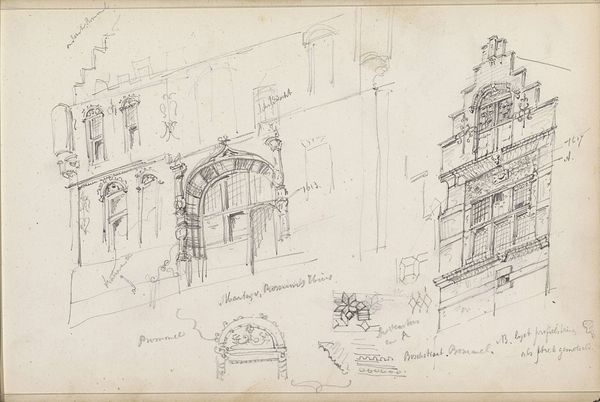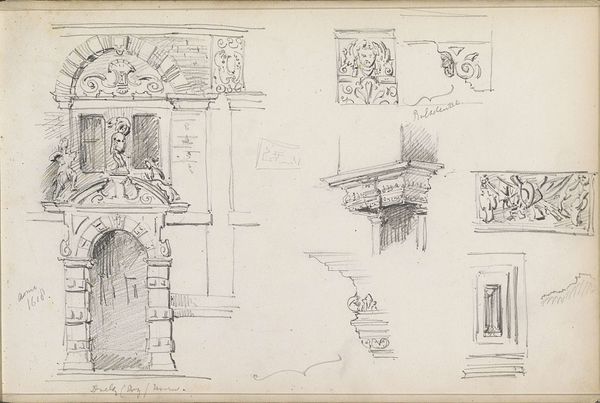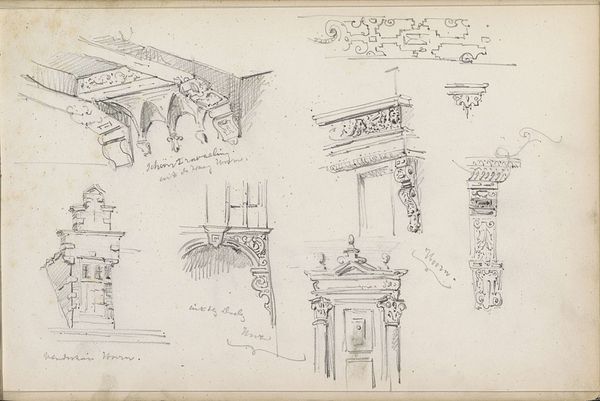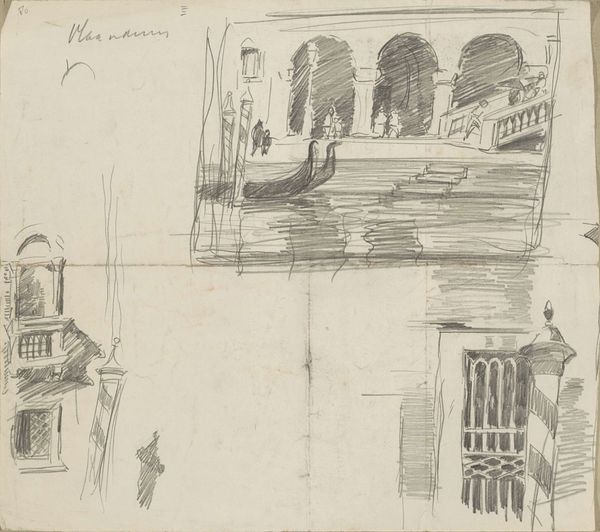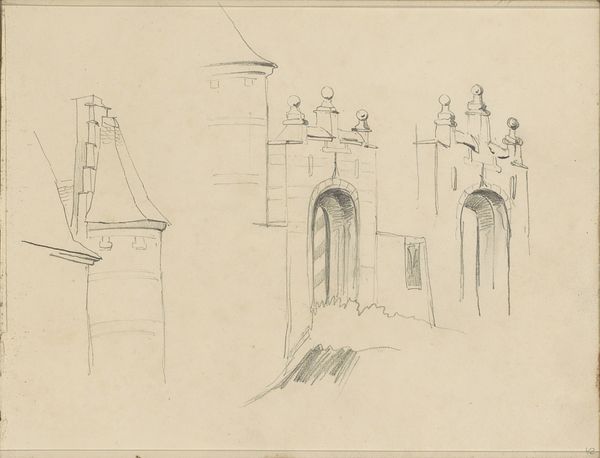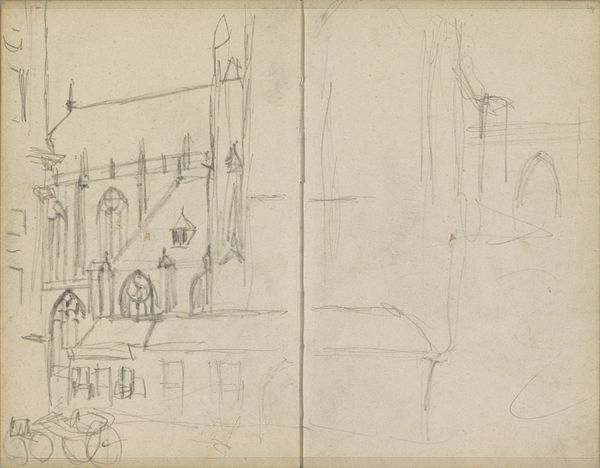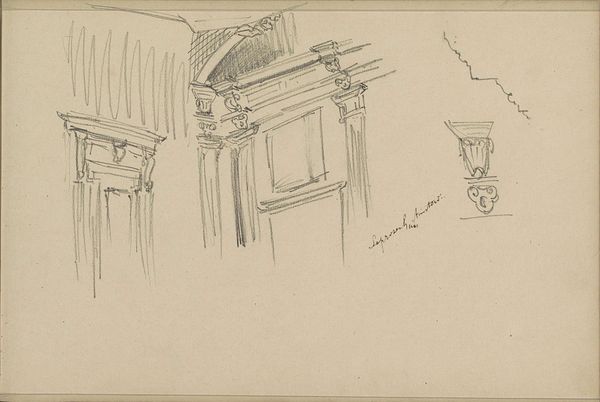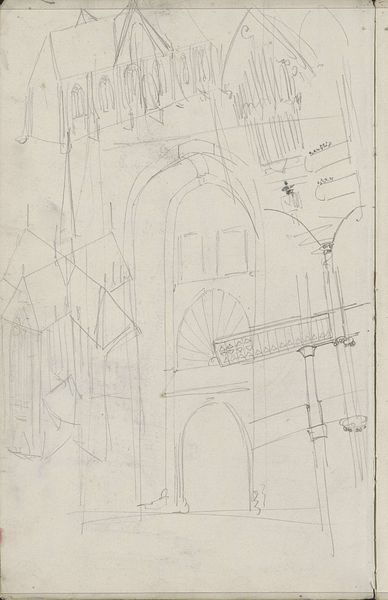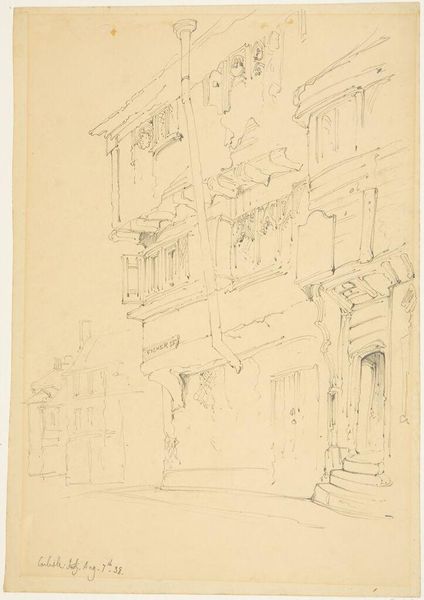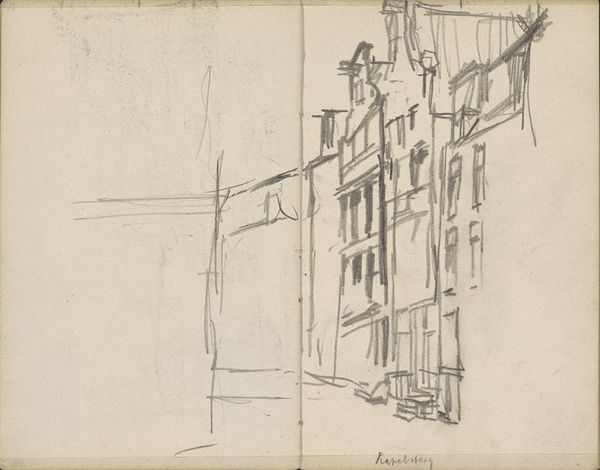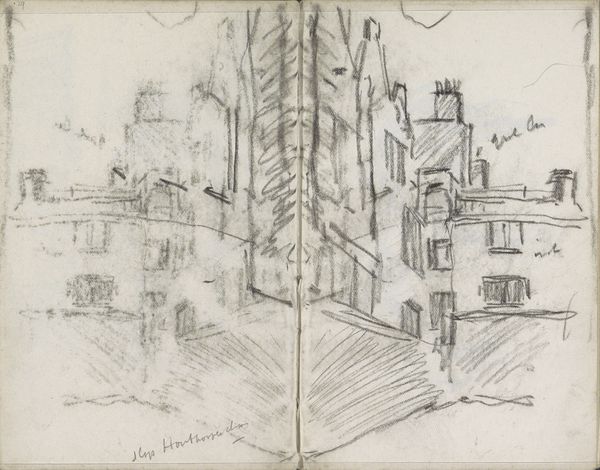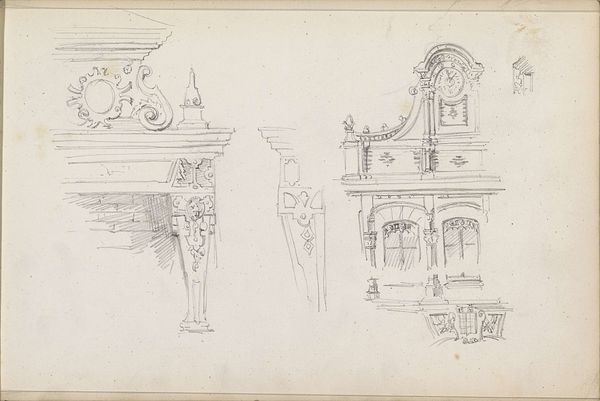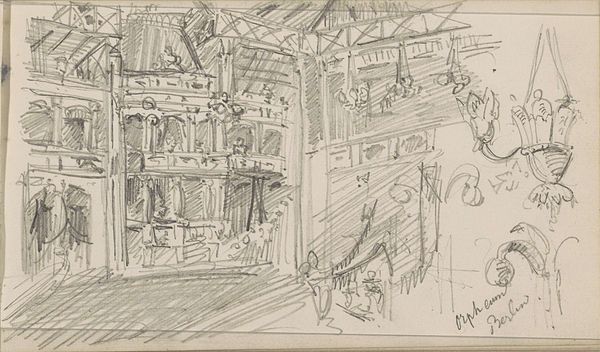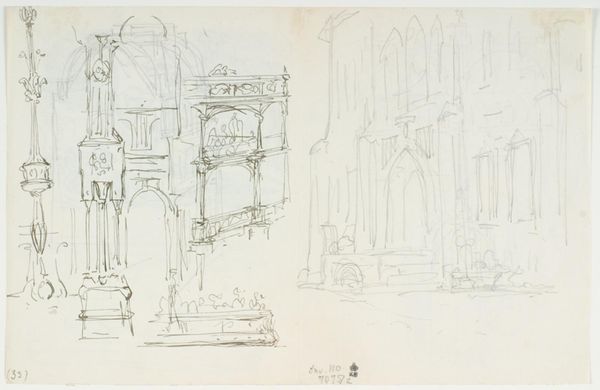
drawing, pencil
#
drawing
#
landscape
#
form
#
pencil
#
line
#
cityscape
#
academic-art
Copyright: Rijks Museum: Open Domain
Isaac Gosschalk made this pencil drawing, “Schoorsteenmantel van Kasteel Arnay-le-Duc in Côte-d'Or,” sometime in the 19th century. It depicts architectural details of a French château. But why would an artist, probably Dutch, record such images? What can we learn from this? During the nineteenth century, the preservation of historical monuments became a matter of intense public interest. In France, this was tied to debates about national identity, especially after the Revolution and the rise of Napoleon. People began to think about what it meant to be French, and part of that involved looking back to the nation’s architectural heritage. Artists played a crucial role in this process. They documented buildings, contributing to a sense of shared history. Drawings like this weren’t just records; they were part of a larger cultural project of defining and preserving national identity. To truly understand this drawing, we would need to delve into the archives. We might look for records of preservation efforts, publications about French architecture, and perhaps even Gosschalk's personal papers to understand the context and motivations behind it.
Comments
No comments
Be the first to comment and join the conversation on the ultimate creative platform.
